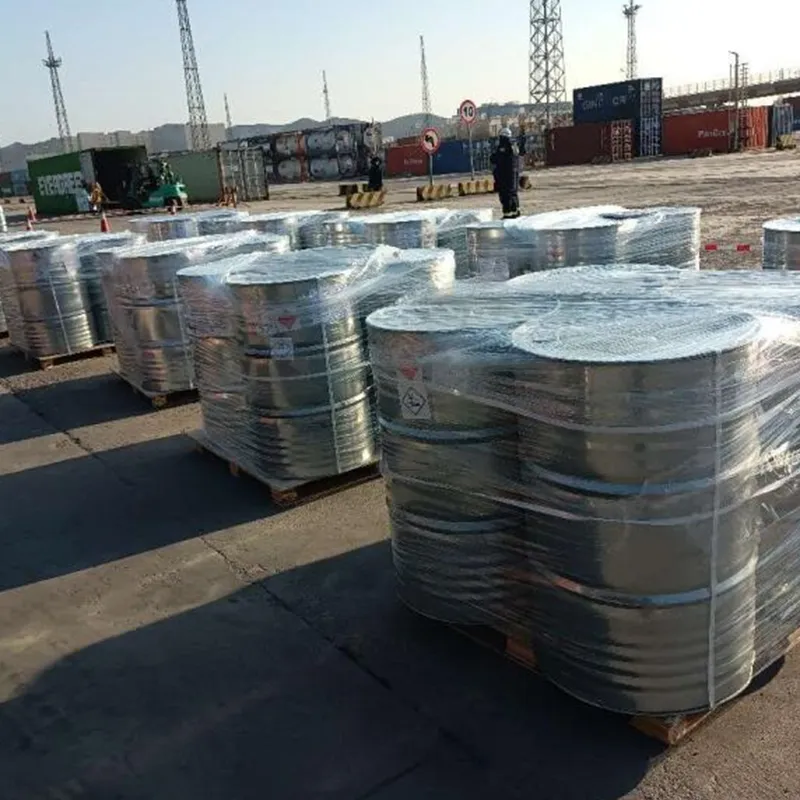
Understanding the Impact of Acid Mine Drainage on Ecosystems and Water Quality
Acid Mine Drainage Causes, Impacts, and Mitigation Strategies
Acid mine drainage (AMD) is a significant environmental problem related to mining activities, particularly in areas where sulfide minerals are prevalent. This phenomenon occurs when sulfide minerals, such as pyrite (FeS₂), are exposed to air and water, leading to a series of chemical reactions that produce sulfuric acid. The resultant acidic waters can have severe ecological impacts, affecting water quality, aquatic life, and surrounding ecosystems.
The Chemistry Behind Acid Mine Drainage
The formation of acid mine drainage is primarily driven by the oxidation of iron sulfide minerals. When the mineral pyrite is exposed to oxygen and water, it undergoes a chemical oxidation reaction
\[ \text{4FeS}_2 + \text{15O}_2 + 14\text{H}_2\text{O} → 4\text{Fe}^{2+} + 8\text{SO}_4^{2-} + 8\text{H}^+ \]
This reaction leads to the formation of ferrous iron (Fe²⁺), sulfate ions (SO₄²⁻), and hydrogen ions (H⁺), the latter of which contributes to lowering the pH of the water, making it acidic. The presence of acid not only affects the chemical composition of the water but also poses substantial risks to both human health and the environment.
Environmental Impacts of Acid Mine Drainage
Acid mine drainage has detrimental effects on aquatic ecosystems. The acidification of rivers and streams can lead to the death of fish and other aquatic organisms, reducing biodiversity and disrupting food chains. Moreover, the increased concentration of metals like iron, copper, and zinc—released during the oxidation process—can be toxic to aquatic life. When these metals settle in sediments, they can further harm benthic organisms and alter habitat structures.
In areas with significant AMD, surrounding vegetation can also suffer due to lower water quality, acidic soils, and metal toxicity. This can result in ecosystem degradation, leading to erosion and loss of biodiversity. Human communities relying on these water sources for drinking, agriculture, and recreation may face severe health risks, economic challenges, and loss of quality of life due to pollution and habitat destruction.
acid mine drainage reaction

Mitigation Strategies
To address the issue of acid mine drainage, various strategies can be employed
1. Preventive Measures Implementing best practices in mining operations can minimize exposure of sulfide minerals to air and water. Techniques such as backfilling mines with non-acid-generating materials and covering waste rock piles can help reduce oxidation processes.
2. Water Management Effective water management strategies can include the diversion of clean water away from mined areas to reduce the volume of contaminated water generated. Moreover, the design of drainage systems to collect and treat AMD before it reaches natural water bodies is crucial.
3. Treatment Technologies Several remediation technologies have been developed to treat AMD. These include - Passive Treatment Systems Utilizing natural processes to neutralize acidic waters through constructed wetlands, anaerobic ponds, or limestone channels that promote the precipitation of metals. - Active Treatment Systems Chemical treatment methods can neutralize acid with lime or sodium hydroxide, though they require continuous maintenance and operational costs. - Bioremediation This innovative method employs microorganisms to enhance the natural attenuation processes, thereby treating AMD efficiently and sustainably.
4. Rehabilitation Rehabilitating contaminated sites involves restoring ecosystems to a stable state. Using native plants and reintroducing biodiversity can help restore functionality to affected areas.
Conclusion
Acid mine drainage represents a complex environmental challenge that requires a multifaceted approach. Through understanding the chemical reactions involved, assessing the environmental impacts, and implementing sustainable management strategies, it is possible to mitigate the effects of AMD. Collaborative efforts among governments, industries, and communities are essential to ensure the protection of water resources and the integrity of ecosystems affected by mining activities. By prioritizing prevention and innovative treatment approaches, we can work towards a more sustainable future in mining.
-
Sodium Dichloroisocyanurate Safety Handling ProtocolsNewsJul.29,2025
-
Mining Chemicals for Copper Extraction Processes GuideNewsJul.29,2025
-
Fertilizer for Sale Shipping and Storage TipsNewsJul.29,2025
-
Dimethyl Disulfide as Sulfurizing AgentNewsJul.29,2025
-
Benzotriazole Safety Data Handling and Storage GuidelinesNewsJul.29,2025
-
Ammonium Bicarbonate Safety Handling Storage GuidelinesNewsJul.29,2025
-
The Transformative Role Of Trichloroisocyanuric Acid in Water TreatmentNewsJul.23,2025
Hebei Tenger Chemical Technology Co., Ltd. focuses on the chemical industry and is committed to the export service of chemical raw materials.
-

view more DiethanolisopropanolamineIn the ever-growing field of chemical solutions, diethanolisopropanolamine (DEIPA) stands out as a versatile and important compound. Due to its unique chemical structure and properties, DEIPA is of interest to various industries including construction, personal care, and agriculture. -

view more TriisopropanolamineTriisopropanolamine (TIPA) alkanol amine substance, is a kind of alcohol amine compound with amino and alcohol hydroxyl, and because of its molecules contains both amino and hydroxyl. -

view more Tetramethyl Thiuram DisulfideTetramethyl thiuram disulfide, also known as TMTD, is a white to light-yellow powder with a distinct sulfur-like odor. It is soluble in organic solvents such as benzene, acetone, and ethyl acetate, making it highly versatile for use in different formulations. TMTD is known for its excellent vulcanization acceleration properties, which makes it a key ingredient in the production of rubber products. Additionally, it acts as an effective fungicide and bactericide, making it valuable in agricultural applications. Its high purity and stability ensure consistent performance, making it a preferred choice for manufacturers across various industries.











